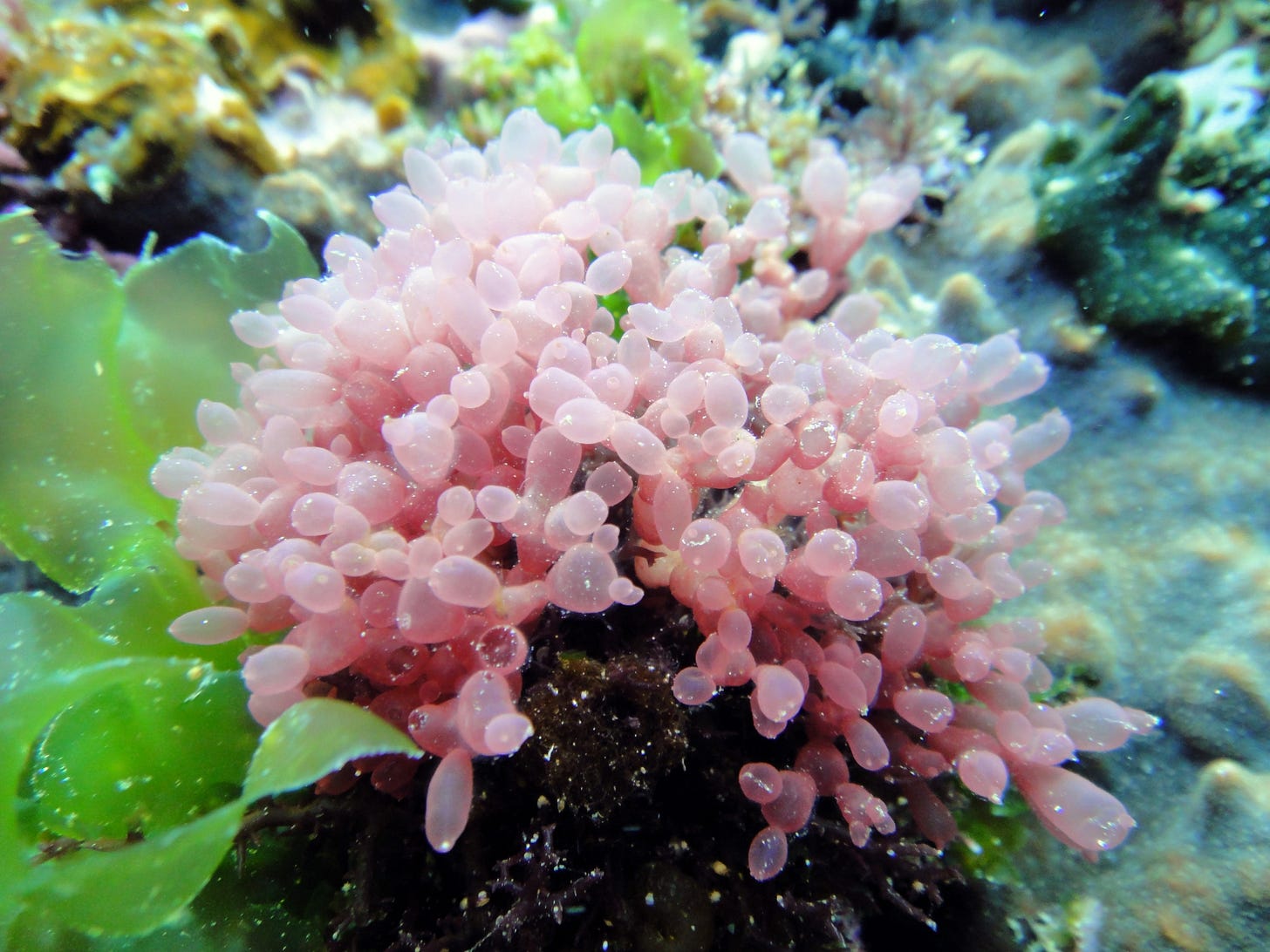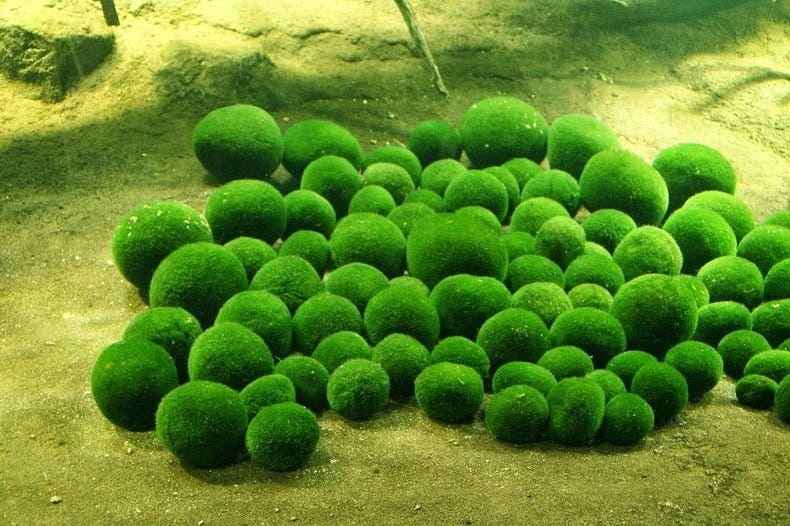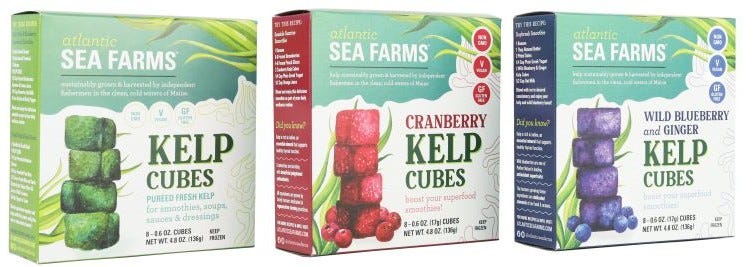9 seaweed trends for 2022
Also: new food products, fixing SE Asia's supply chains, rise of the she-weed.
I recently published my first State of the Seaweed Industry, looking back at the events of 2021. In this newsletter, I am going to try to look ahead, with 9 trends I think you will be hearing more about in the coming year, if not from anyone else, at least from me.

1 - Biochar: The LCA jury is still out, but seaweed biochar may be the best way to store carbon and nutrients taken from the ocean into depleted soils.
2 - Nutrient credits: Carbon dioxide is not our only problem. Nutrient credits are coming to reward seaweed’s other ecosystem services.
3 - Increasing efficiency: figuring out direct seeding will be a game changer. Substrate improvements to increase yield, decrease biofouling and bring down the price of string is another item high on growers’ wish lists.
4 - Bioplastics: with more than 35 startups in the database, expect a lot of news this year.
5 - Data: Everybody wants more data. Production forecasts, demand forecasts, Sargassum forecasts. That’s one side. The other side is that, as monitoring tools improve, more on-farm data will be produced. Who will get their hands on it / make the best use of it?
6 - Investability: More investors are seeing the potential. But projects are often too small for them to deploy money. In 2022, the story will start shifting from “educating the market“ to “improving projects’ investability“.
7 - Standards: Harvested in another sea, another season, your seaweed will taste and feel different. Product makers need uniform standards to reflect that.
8 - Education: The labour market is tight, and that won’t change anytime soon. Education is key to the growth of the seaweed industry. Not only to form a future workforce, but also to strengthen support from the public at large.
9 - The seaweed-is-a-hype hype: 3 posts in my Linkedin feed this morning from seaweed veterans, saying seaweed aquaculture has no clothes on, hyped by fly-by-night cowboys. Is the crash imminent? Maybe, I don’t know. But I know I will be reading it often on Linkedin.
New food products
UK-based saucier Sozyë is fermenting Scottish seaweed to create soy-free soy sauce, oyster sauce and fish sauce.
Atlantic Sea Farms is now selling frozen kelp cubes in 3 flavours, including cranberry kelp, and wild blueberry and ginger kelp. Yeah.
Cascadia Seaweed has launched its own food brand, Kove. Just one seasoning so far, Sea Spice, but the company says it is looking to expand into seaweed burgers.
Cargill has launched WavePure®, a seaweed powder range obtained without any chemical modification.
New Zealand’s Agrisea is making a “superpower beverage“ out of Ecklonia, while Swedo-Caribbean start-up Seatrients is making Sea Moss smoothies.
Bridging the gaps in Southeast Asia’s supply chains
The Fish Site did an in-depth feature on Sea Green and Mari Oceans, who have really taken a holistic, systems-thinking approach at solving the gaps in the Southeast Asian seaweed sector: the lack of traceability, the low rewards for farmers and the absence of funds, tools and skills to improve quality and yield. Worth a read.
The two companies are now raising capital to scale up. On top of that, Sea Green recently announced it will integrate the sensors and analytics software of SATPOS of Norway.
Funding
Vyld received pre-seed funding for their she-weed tampons, from impact investors The Case for Her and Purpose Ventures.

Owing to very limited processing capacity, Alaska’s seaweed farmers barely managed to make good use of last year’s record harvest. With another record-breaking harvest likely this spring, Alaskans just got a critical $500,000 grant for a new facility.
€2.6M for 2 new research projects in the Netherlands. One on protein from mussel-seaweed cultivation, the other on improving attachment of sugar kelp to substrate. In related news: materials science company Gore is working on improved substrates in collaboration with Seaweed Solutions.
€1.6M for B’ZEOS’ bioplastics research from the Norwegian Research Council.
Conservation, restoration, sequestration
Mongabay explores how, through kelp forest restoration, Indigenous communities are also restoring their traditional connection with the ocean.
Has China completed the first carbon credits trade from seaweed aquaculture? It seems so.
P.S.
As if marimo weren’t awesome enough by themselves, they have now been turned into photosynthesis-powered roving underwater sensor bots.
And Japanese researchers have discovered that marimo have growth rings similar to trees, which means we can tell their age. The oldest living one found so far is over 200 years old.





Nothing about seaweed being used in fabrics and clothing?
Nothing about seaweed being used in clothing?